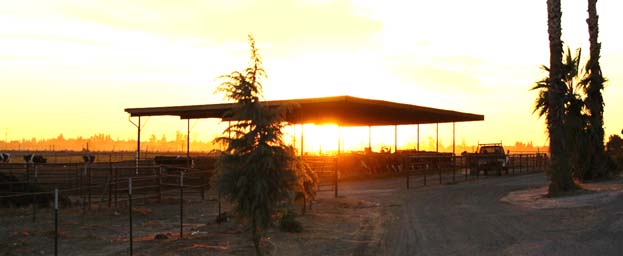
Mel DeJarnette, Reproductive Specialist, Select Sires, Inc.
It’s no secret that many areas of the United States (especially the tropical, subtropical, and arid zones) experience significant economic losses each year due to stresses suffered by cattle during warm weather. These losses are manifested directly as losses in milk production, weight gain, or indirectly as a result of decreased reproductive performance.
This decrease in reproductive performance is usually expressed as an increase in services/conception, decreased conception rates, increased average days open and decreased pregnancy rates.
Basic Practices
 Obviously, the most basic management practice for handling cows in heat stress environments is to provide protection from direct sunlight. Cows should have free access to shaded areas during hot weather. Be it from a grove of trees, shade screens, or a pole barn. Shade, whether natural or artificial, can reduce the heat stress on production. Cows which are allowed access to shaded areas have been observed to produce 10.7% more milk and had 19.1% higher conception rates than the controls without shade.
Obviously, the most basic management practice for handling cows in heat stress environments is to provide protection from direct sunlight. Cows should have free access to shaded areas during hot weather. Be it from a grove of trees, shade screens, or a pole barn. Shade, whether natural or artificial, can reduce the heat stress on production. Cows which are allowed access to shaded areas have been observed to produce 10.7% more milk and had 19.1% higher conception rates than the controls without shade.
Shade is especially important at the feedbunk and watering troughs. Since heat stress reduces feed intake, cows should not be baking in the sun while they try to eat. Also, placing feed and water close to shade structures will reduce the amount of physical activity required to move between these areas and thus, decrease the potential heat load on the animal. While any shade would be beneficial, cows which travel some distance from shaded areas to feeding areas may easily become hot enough to lose their appetite before they get there. Other practices which reduce daily physical activity will also help reduce the potential for heat stress. Designing walkways and loafing areas for proper drainage so cows will not have to trudge through mud and providing effective fly control are a couple of examples.
Crowding should also be avoided. Cows cannot effectively dissipate their own body heat when they are cramped and exposed to the additional body heat of surrounding cows
Decrease the number of cows per milking group to reduce the amount of time spent in hot, crowded allies and holding pens. This may require temporary fencing of additional space or moving a group of dry cows to a new location
Since cows will often decrease feed intake by as much as 25% in heat stress situations, they need to get more energy from the feed they do consume. Therefore, rations fed during periods of heat stress should contain a higher percentage of protein and energy. Also, much of the internal heat produced by animals is a result of digestion of roughage and fiber. Thus, reducing fiber intake will help to relieve the heat load on animals. Both of these strategies may be met by increasing the percentage of concentrates in the diet. Additionally, maintaining feed that is fresh and clean is critical at this point
Programs to Help You Succeed …a customized approach to reproductive management
Estrus Synchronization
The inter-estrus period has not been shown to be significantly affected by periods of high environmental temperature. However, estrus periods of cows experiencing heat stress in the southeastern U.S. have been observed to be shorter in duration and lower in intensity than those of cows in more temperate environments.
Heat stressed cows will be reluctant to spend their energy on mounting and other physical activities. Thus, cows exposed to high environmental temperatures will cycle fairly normally (every 18-24 days); but, due to the shorter duration of the estrus period and the decrease in physical activity (i.e. mounting, walking fences, etc.) it will be much harder to catch these animals in heat.
Heat-stressed cattle appear to respond extremely well to prostaglandin injections. Therefore, estrus synchronization programs could be effectively implemented with other environmental management systems.
A.I. Best During Heat Stress
Bulls are also very susceptible to heat stress. Some bulls exposed to even short periods of thermal stress have significant reductions in semen quality that may last for more than a month. Extended periods of high environmental temperatures may also reduce the quantity of sperm in each ejaculate as well as the bulls sex drive or libido. Bulls at Select Sires are housed in air conditioning or well ventilated barns to minimize effects of heat stress. A.I. during heat stress periods will expose cattle to better quality semen than a bull running with the herd could provide.
 Summary
Summary
Minimizing stress is essential to achieving and maintaining maximum productivity and profitability in any cattle operation (beef or dairy). Every summer, the stress associated with increased environmental temperatures results in decreased performance in herds throughout the United States. Although we cannot change the weather, we can alter our management practices in order to minimize the effects of hot weather on our animals.
“One of the biggest obstacles facing reproductive efficiency is managing summer heat stress.” Bill VandeGraaf All West/Select Sires Select Reproductive Solutions Specialist

 .
. .
. .
. .
. .
. .
.